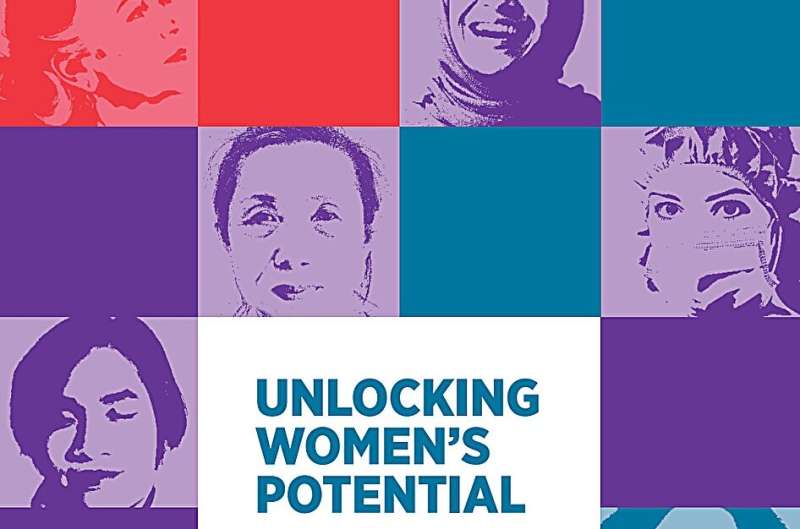
Credit: Centre for Western Sydney
Western Sydney University has released new research highlighting a significant spatial gap in the income levels between women in Western Sydney and the rest of Sydney.
In addition to finding that women in Western Sydney earn $20,233 less than women in the rest of Sydney, data from the report also revealed that men in Western Sydney also earn $7,563 less than women in the rest of Sydney, highlighting that both genders experience a spatial pay gap.
The study found that if the participation of women in Western Sydney matched that of women in the rest of Sydney, up to 83,160 women would enter the workforce, placing an additional $90,266 in the pockets of these women each year.
Chancellor, Professor Jennifer Westacott AO, launched the groundbreaking report at Western Sydney University’s International Women’s Day celebration in the heart of Parramatta.
Professor Westacott highlighted the profound impact that the inclusion of women has on the region’s economic advancement, and the work that still needs to be done to unlock their full potential.
“Pleasingly women are gaining qualifications in Western Sydney at a rapid rate, with over an additional 140,000 women completing tertiary degrees over the last decade,” said Professor Westacott.
“There is still so much we need to achieve for the gender gap to close and for the true advancement of all women—no matter their geographical location, economic, social or cultural status.
“In the coming decades—and with the right education and skills—they will be working in the cutting-edge global industries that power up our economy in Western Sydney and beyond.”
Released by the University’s Center for Western Sydney as part of its work on Western Sydney’s economic potential, the Unlocking Women’s Potential: Labor force participation in Western Sydney report maps the geography of women’s participation in the workforce across Western Sydney compared to the rest of Sydney.
The report analyses the 2021 ABS Census, policies and programs, and insights from key stakeholder consultations with government, community organizations and academics.
Co-lead author of the report for the Center for Western Sydney, Professor Kate Huppatz, an expert on gender and work from the School of Social Sciences and the Institute for Culture and Society at the University, said while tertiary qualification attainment among women in the region has surged, the study found participation in the workforce lags behind national averages, particularly in key LGAs such as Fairfield, Cumberland and Canterbury-Bankstown.
“The report found women in Western Sydney are more educated yet work and earn less than men in Western Sydney, and women in the rest of Sydney. Less advantaged women bear the greatest impacts of dependent children and caring responsibilities, particularly solo mothers,” said Professor Huppatz.
“In particular women from diverse backgrounds, including migrant and refugee women, face the greatest negative impacts on their labor force participation compared with other cohorts in Western Sydney.”
Director of the Center for Western Sydney, and co-lead author, Dr. Rhonda Itaoui, highlighted women in the region face place-based barriers such as limited local employment options, long commute times and insufficient affordable childcare options, compounded by entrenched gender norms and societal expectations that see caregiving responsibilities fall primarily to women.
“Place-based strategies for achieving gender equity in employment are needed to break down these barriers, supported by policymaking and initiatives that directly tackle the distinct obstacles encountered by women in suburban regions like Western Sydney,” said Dr. Itaoui.
“The Center is committed to realizing the full potential of our region for all its diverse residents, and this report marks the beginning of our dedicated research agenda on women and the economy. We align our vision with the global imperative to advance women’s economic advancement—because as the economic benefits illustrate, when women rise, we all win.”
In addressing the report’s comprehensive findings, the researchers advocate for the empowerment of women in the region, with the report outlining key priorities to unlock participation in the labor force, delivering social and economic benefits. These include:
Addressing gender disparities in the workforce between Western Sydney women and men.
Developing a targeted strategy to address childcare deserts and support flexible work for women of Western Sydney, and
Prioritizing the inclusion and empowerment of the diverse women of Western Sydney.
More information:
Unlocking Women’s Potential: Labour force participation in Western Sydney: aem.westernsydney.edu.au/conte … -sydney/IWD_2024.pdf
Citation:
Gender equity: ‘It’s where you live that counts,’ says Australian study (2024, March 9)
retrieved 9 March 2024
from https://phys.org/news/2024-03-gender-equity-australian.html
This document is subject to copyright. Apart from any fair dealing for the purpose of private study or research, no
part may be reproduced without the written permission. The content is provided for information purposes only.
>>> Read full article>>>
Copyright for syndicated content belongs to the linked Source : Phys.org – https://phys.org/news/2024-03-gender-equity-australian.html































